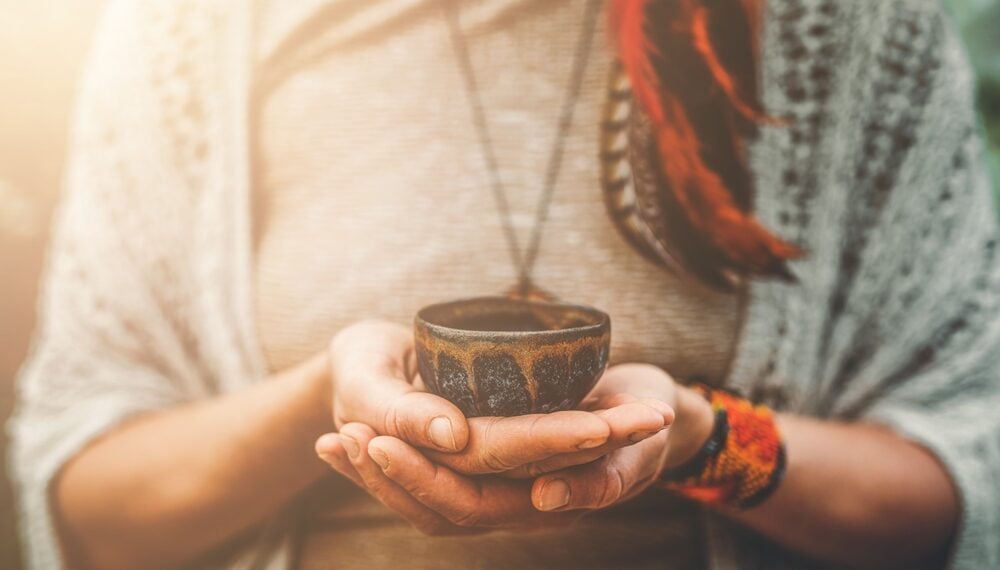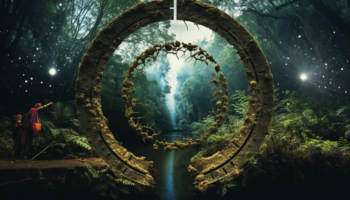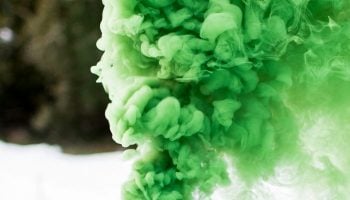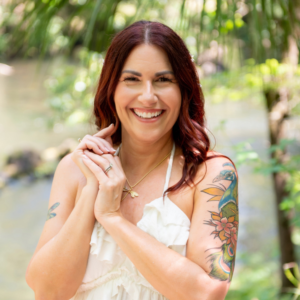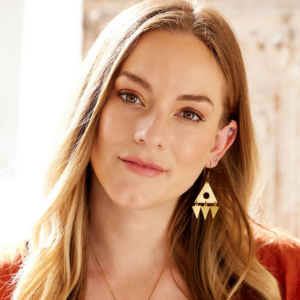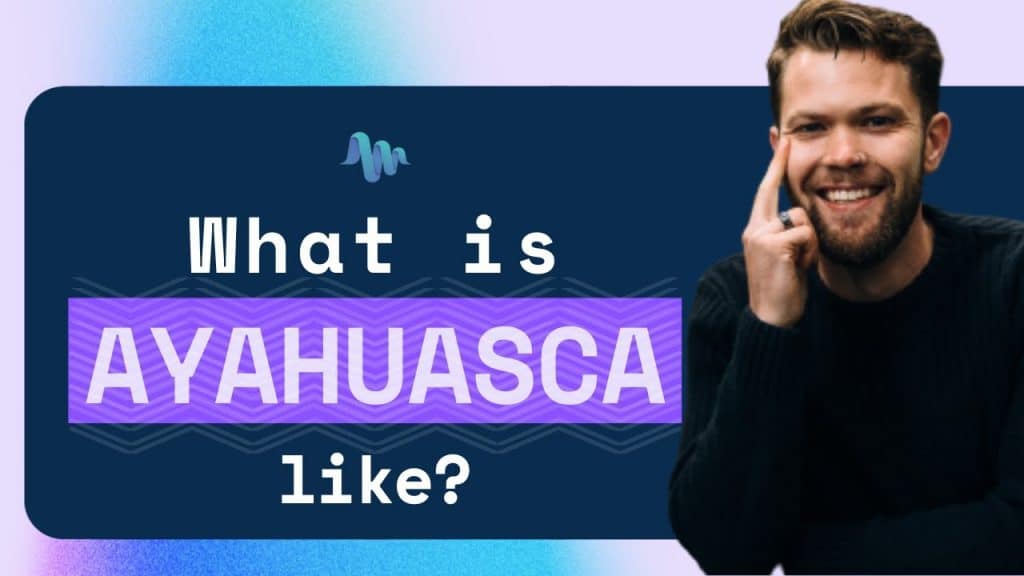
Disclaimer: Ayahuasca is a largely illegal substance, and we do not encourage or condone its use where it is against the law. However, we accept that illicit drug use occurs and believe that offering responsible harm reduction information is imperative to keeping people safe. For that reason, this document is designed to enhance the safety of those who decide to use these substances.
Over recent years, ayahuasca has exploded in popularity as more and more people–including celebrities–report profound visionary and healing experiences after drinking the Amazonian brew.
Given the increasing curiosity and excitement about this medicine, the growing wealth of online information can sometimes be misleading.
If you’re thinking about trying ayahuasca for the first time but are unsure what to expect, this article will provide you with a clearer understanding of the ayahuasca experience, as well as practical advice on choosing the best ceremony for you, so you can approach with an informed perspective.
You can also hear what Third Wave CEO and founder Paul F Austin has to say on what to expect during an ayahuasca experience in the video above.
Ayahuasca: The Amazonian Psychedelic Medicine
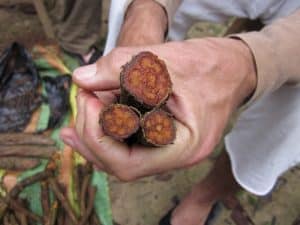
Ayahuasca, also known as yage, aya, and la purga, is a psychoactive brew native to the Amazon, and is typically drunk for spiritual and healing purposes.
Traditionally, the brew is made using the Banisteriopsis caapi vine and Psychotria viridis shrub, along with other Amazonian plants.
Psychotria viridis contains the powerful psychedelic substance N,N-dimethyltryptamine (DMT), the main active ingredient, and Banisteriopsis caapi contains monoamine oxidase inhibitors (MAOIs). Since MAOIs inhibit the body from naturally breaking down DMT, combining these molecules in ayahuasca gives rise to prolonged hallucinogenic effects, compared to the smoked DMT experience.
There are key differences between DMT and ayahuasca. Notably, DMT journeys last about ten minutes while ayahuasca circulates through the body for four to six hours. DMT is also much more potent.
Ayahuasca and Mental Health Research
Although indigenous people of the Amazon have long recognized the ayahuasca brew’s healing properties, it’s only in recent years the medicine has become acknowledged in the West.
With more and more people reporting life-changing, transformative effects following ayahuasca, scientific researchers have begun to investigate the medicine’s physical and health benefits.
For instance, a recent study conducted at the Ayahuasca Centre in Iquitos, Peru, found participants had significant reductions in anxiety and depression six months following multiple ayahuasca ceremonies. Moreover, they showed genetic changes in a protein type called sigma-1, which is associated with memory and learning.
Using ayahuasca to treat post-traumatic stress disorder (PTSD) is also a growing area of interest. With several cases of war veterans returning from ceremonies having healed their war-related trauma, the US and UK-based charity Heroic Hearts provide veterans access to ayahuasca ceremonies in South America and psilocybin retreats.
You can read our Ayahuasca and Research blog post for more details about the study and ayahuasca in health.
Traditional Ayahuasca in Peru and Brazil
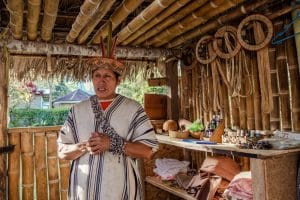
Although the exact origins of ayahuasca use remain unknown, records of South American tribes using ayahuasca date back to 1851, when English Botanist Richard Spruce encountered Banisteriopsis caapi during a traditional ceremony among the Tukano tribe of northwestern Brazil.
Years later, Spruce published Notes of a Botanist on the Amazon and Andes, describing how the same combination of plants was used in spiritual rituals across South America, including Bolivia, Colombia, Argentina, and Chile.
To date, records show that approximately 160 different tribal groups use ayahuasca today. Not only does each group have its own unique ceremonial rituals and subtle variations on brewing the medicine, but the reasons for use also differ widely.
For example, whereas the Waorani (Huaorani) tribe in Ecuador uses ayahuasca to improve their hunting skills, ethnobotanists have noted how tribes along the Purus River (between Brazil and Peru) use ayahuasca as a means of social bonding.
Unlike in the West, the curandero (the Latin American term for healer) drinks ayahuasca instead of the person looking to be healed. By doing so, they commune with spiritual and plant intelligence to help diagnose and determine the best remedy for their patient.
What to Expect in an Ayahuasca Ceremony
Ayahuasca ceremonies can vary greatly depending on several factors.
First, is the ceremony traditional, and if so, what traditions are being followed?
For example, in the Brazilian Santo Daime tradition, you will be very active during the ceremony and perform ritual group songs and dances. In contrast, in the Peruvian Shipibo tradition, you will be expected to be still for most of the journey, allowing you to explore internally. Songs and prayers will also be performed by the shaman rather than ceremony participants.
Some ayahuasca ceremonies may blend different lineages and traditions, and some may include no indigenous rituals or prayers. Yet, whatever the case, it’s important to pay respect to those who have kept the healing traditions alive when engaging with the medicine.
Another question to consider when addressing what to expect during a ceremony is, what is the ceremony’s purpose?
As ayahuasca becomes more sought after in mainstream culture, several centers have cropped up offering ayahuasca wellness retreats, mainly in South and Central American countries like Costa Rica and Mexico. Some of these retreats are more focused on personal healing and transformation than a traditional practice. Wellness-based activities from traditions outside of ayahuasca lineages, such as yoga and meditation, are also incorporated into the retreat schedules.
Therefore, what you might expect at a luxury retreat center will significantly differ from an indigenous ceremony deep in the jungle.
Despite these differences, there are some commonalities you can expect during ayahuasca ceremonies.
Dieta
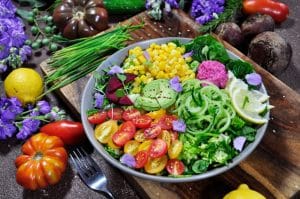
You may be asked to undergo a diet or la dieta, involving psychological, dietary, and social restrictions, in the weeks leading up to your ayahuasca ceremony.
The diet typically involves abstaining from sexual relations, psychoactive substances, and events that may bring about stress or shock. You will also be asked to avoid certain foods and food groups, including:
- Red meat
- Sugar
- Spicy foods
- Dairy
- Fermented foods
Energetically, these restrictions are put in place to help cleanse the mind and body in preparation for ayahuasca.
However, for medical purposes, the diet is also essential to help avoid physical risks from having too much serotonin in the body.
Since MAOIs found in Banisteriopsis caapi naturally increase levels of the neurotransmitter serotonin, combining ayahuasca with serotonin-increasing medication, like antidepressants, and foods rich in the serotonin-building-block molecule tyramine could result in dangerously high levels of serotonin in the body. Tyramine-rich foods include:
- Meat (particularly processed or cured meats)
- Fermented vegetables
- Cheese
- Citrus fruits
In traditional lineages, rather than being a broad set of guidelines, the dieta is something prescribed explicitly by the shaman to serve the unique healing needs of the person working with ayahuasca.
We have a complete guide on the ayahuasca diet, which you can check out here.
The Ayahuasca Ceremony Guide
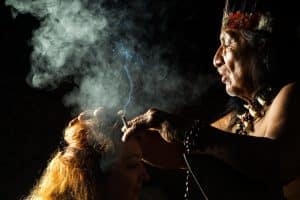
Shaman vs. Curandero
The word shaman is derived from the word saman used by the Tungusic tribe in Siberia, meaning to heal, foresee future events, and communicate with spirits, plants, animals, and other worlds.
Although the Tungusic people aren’t associated with using plant medicines (besides limited evidence around use of the Amanita muscaria mushroom), shaman has become a commonplace term in ayahuasca ceremonies today.
For native Amazonian ayahuasca-using tribes, the word curandero is used instead. Like the shaman, a curandero is someone who heals, working with plants as part of their approach. Curanderos interact with the spirit world in order to assist healing.
In contemporary ayahuasca culture, the terms shaman and curandero are used interchangeably.
The Role of a Guide
In traditional native ceremonies, the role of shaman is to journey into the spirit world so they can receive advice on healing. Throughout the ceremony, they will use methods such as drumming and chanting to achieve an altered state in which they’re able to do so.
In native traditions, ceremonies are typically guided by one shaman. However, in more modern ceremonies suited to Westerners, other facilitators or guides may be present in order to meet ceremony participants’ mental health or physical health needs.
Someone with a medical background, for example, would be able to advise participants on the interaction of their current medications with ayahuasca and how to wean off their medications prior to the ceremony. A therapist or coach can also offer one-to-one support to help participants process traumatic or challenging memories that may have surfaced during their ayahuasca experience.
Multiple Ayahuasca Ceremonies
It’s commonplace when working with ayahuasca to undergo multiple ceremonies, ranging from two over the course of a weekend, to more than ten in a month-long retreat.
Although you may still reap many benefits from a single ceremony, working with the medicine over multiple ceremonies allows you to go deeper into your healing journey.
Moreover, if issues remain unresolved following an ayahuasca experience, subsequent ceremonies can help make better sense of these experiences and bring about closure.
Music
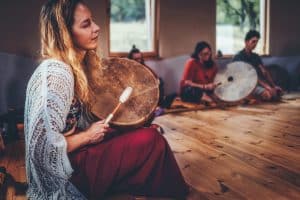
The role of music in shaping psychedelic experiences is undoubted, intensifying and adding new emotional dynamics to the journey.
In traditional Shipibo-style ceremonies, the shaman will perform icaros, which are sacred, healing songs passed down through lineages of healers. Typically these are sung to the accompaniment of a rattle, and have improvised elements depending on what messages are being energetically transmitted.
In less traditional, modern ceremonies, you will probably hear a blend of different music types, as well as intermittent periods of silence, to help create calm and promote reflection between heightened emotional states.
Purging
For some, the notion of nausea, vomiting, and diarrhea during a ceremony can be incredibly off-putting. However, purging during an ayahuasca ceremony is seen as a pivotal part of the healing process, as it involves releasing stuck energies and toxins from the mind and body.
Not everybody purges during ayahuasca. However, ceremony facilitators will do their best to ensure sick buckets are available and may encourage and help you purge if you feel something needs to be released.
Prayers
Ayahuasca is a sacred medicine for many traditions. During ceremonies, prayers will be made to honor the spirit of ayahuasca, and to Mother Earth for providing healing plants.
You may also be encouraged to make your own prayers for the ceremony, such as healing wishes for yourself and others.
Other Plant Medicines
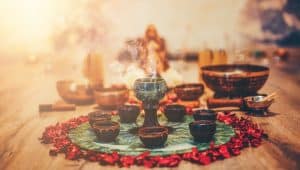
During ceremonies, you may expect other sacred plant medicines to be offered or used. For example:
- Rapé: A tobacco preparation that is insufflated to help encourage purging and bring mental clarity.
- Sanaga: A juice derived from the Tabernaemontana undulata tree, applied to the eyes and used to help bring clarity and insight.
- Kambo: Frog venom, which is applied through holes in the skin and causes purging. Kambo is often used in the lead-up to the ceremony to help energetically cleanse and detoxify in preparation for ayahuasca.
What is the Ayahuasca Experience Like?
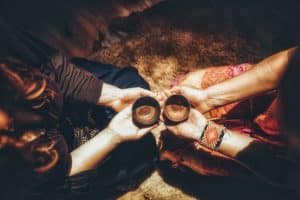
Common Effects of Ayahuasca
It is difficult to explain the ayahuasca experience. Not only is the nature of the experience challenging to put into words, but since everybody has their own healing needs, intentions, and mental state, each person’s journey will be unique.
“Trying to describe the experience does not do justice to the journey because it is so intensely personal and meaningful,” says Third Wave CEO Paul Austin in this Youtube video.
“Everyone is different, at a different place in their life, and working through different things.”
Nevertheless, there are some common experiential elements shared among ayahuasca users.
These include:
- Mystical experiences: These subjective, spiritual experiences are characterized by a loss of ego, feelings of oneness with the universe, and connection to a higher or divine source.
- Encountering other-worldly beings: Many people report meeting spiritual entities, including “Mother Ayahuasca” herself and the spirits of passed-away ancestors.
- Visual imagery: Visuals won’t appear for everyone. But if they do, imagery can range from mild kaleidoscopic patterns, similar to other psychedelic drugs like LSD and psilocybin, to full dream-like scenarios.
- Strong emotions: Intense feelings can range from fear and sadness to bliss and ecstasy and rapidly switch between these extremes.
- Physical effects: Physical side effects include increased heart rate and blood pressure, nausea and vomiting.
- Time distortion: In general, the drug effects of ayahuasca last about four to eight hours and can take between 30-90 minutes to kick in, depending on the medicine. However, the way you experience time will be different from usual. Passage of time may seem slower or faster than normal. In some instances, participants may also experience time as non-existent.
Revealing the Subconscious
One key element of the ayahuasca journey is revealing repressed memories and emotions.
Confrontation with deep traumas can sometimes make journeying with ayahuasca challenging. Yet, in interacting with all the shadow sides of ourselves, the most significant healing can happen, as this allows us to overcome what is holding us back and move through life with greater freedom.
For this reason, when challenging psychological material arises during ayahuasca, it’s encouraged to surrender and trust the medicine rather than trying to escape or fight off the experience.
However, it’s important to note that, although moving through challenges can be incredibly beneficial, there are cases where challenges can remain unresolved, leaving people feeling distressed or confused following a ceremony.
Therefore, when looking for ayahuasca facilitators, it’s essential to choose those who can offer therapeutic support to help you navigate the process.
You can also seek help from a professionally trained integration therapist in making sense of and recovering from difficult and confusing journeys. To find an integration therapist either online or local to your area, check out our directory of psychedelic support.
Choosing an Ayahuasca Ceremony or Retreat
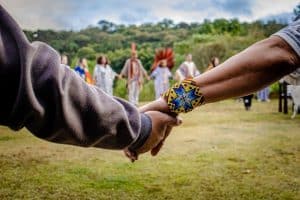
Safety
With the ayahuasca industry largely unregulated, there have been multiple cases of poorly trained shamans and facilitators providing ayahuasca without a thorough knowledge of mental health and medical risks. These factors not only jeopardize well-being, but incorrectly brewed medicines and drug interactions might even lead to death.
Moreover, as the industry gains increasing traction, there have been more and more incidences in recent years of people posing as shamans to abuse their power.
For example, in 2021, the New York Times published an article describing sexual assault, robberies, and several retreat participants developing mental health conditions following ayahuasca experiences.
To ensure safety, it’s best practice to choose retreats and ceremonies that people you know have attended. If you don’t know anybody who has participated in a retreat or ceremony, check reviews from multiple online sources and look for directories with vetted retreats, like Third Wave’s Psychedelic Directory.
If you are working with a psychological disorder, we would also advise opting for a ceremony where somebody specifically trained in mental health is part of the facilitation team. If you have a psychotic-related condition, we advise against ayahuasca entirely.
When searching for a retreat, make sure the organizers answer “yes” to the following questions and provide explanations of their process.
- Do the staff guides ask for detailed physical and mental health information?
- Is extensive preparation guidance provided?
- Is integration support offered?
If the answer to any of these questions is no, then it’s unlikely the ceremony space will best support your mental health needs. Without physical screening, it could be dangerous.
A valuable resource to determine the safety of your facilitator is the Guild of Guides’ Code of Conduct. By following the checklist, you can help ensure the adequacy of your guide or shaman.
Using our Psychedelic Retreat Directory, you can also ensure your retreat is legitimate, trusted, and offers high standards of mental health support.
Intention

You also want to ensure the retreat aligns with your interests and intentions.
Consider a healing or wellness retreat if you’re looking for personal healing. You may consider a one-to-one rather than a group ceremony for more personalized support if it’s a particular trauma you’re working with. Finally, consider a more traditional ceremony if you’re more interested in mystical and religious experiences.
Whatever your intention, make sure you research to see what is being offered and speak to the guide beforehand to see if the ceremony will suit your particular needs.
What to Expect From an Ayahuasca Ceremony: Final Thoughts
Because ayahuasca is a deeply personal experience that will differ from ceremony to ceremony, you can never truly know what to expect.
However, by considering your intentions and conducting research, you can understand which ceremony and retreat centers may be best for you.
For more information about ayahuasca and other psychedelic retreats–including in-depth personal reviews–visit Third Wave’s psychedelic provider directory to find curated psychedelic retreat offerings.
All retreat centers and organizers listed have been verified or rigorously vetted by the Third Wave team, so you can feel confident knowing these retreats are worth considering for this vulnerable and transformative experience.

